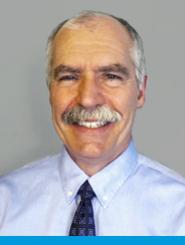Website to merge into Ochsner.org on August 8!
ochsner.org
ochsner.org

With Christmas past, let's pause from this column's usual how-to-keep kids out of the Pediatric Emergency Department. Instead, here’s the weird story of the birth of Neonatology, the care of sick and premature newborns.
It started around 1880, when French obstetrician Etienne Tarnier visited the Paris Zoo. Tarnier witnessed hatching exotic bird eggs in an “incubator,” a warm box that insured the survival of precious chicks. Another part of the story: Germany had recently creamed the French in the Franco-Prussian war, and France needed every baby to replace casualties from the war and subsequent famine. Tarnier's brainstorm: invent an incubator to save wizened and premature babies born of malnourished women who would otherwise die of cold stress. It worked; his hospital’s “couveuse” ward raised the survival rate of newborns under 4 ½ pounds from 35% to 62%.
Tarnier and his protege, Pierre Budin, made further refinements. They encouraged breast feeding rather than feeding less nutritious cow’s milk. They pumped fresh air in from outdoors; hospitals at the time were renowned for their stink of putrid wounds and exhalations of the sick. They also enforced cleanliness to minimize infections. As otherwise doomed infants began to thrive, Budin went the next step: taking incubators on the road to show them off.
Before television and radio, scientific advances were heralded at gigantic, elaborate versions of country fairs called World Expositions. Besides rides and circus-like sideshows, they also had pavilions: buildings sponsored by countries to exhibit their cultures and the latest technologies. Disneyworld’s Epcot Park is a direct descendant of these Expos. At Berlin’s Great Industrial Exposition of 1896, Budin’s incubator pavilion fused sideshow spectacle with scientific education by displaying thriving preemies to gawking fairgoers. Budin’s assistant, American Martin Couney, was taken with this wonder and brought it home to the states. And took the freakshow aspect to another level.
As we mentioned above, World Expositions like Berlin’s were temporary amusement parks. Their construction and operation were funded by charging admission. Visitors enjoyed rides and circus-like attractions and could see other scientific wonders like the amazing tiny babies. While charging strangers to view someone else’s infant seems like exploitation and privacy invasion, these issues were considered minor compared to disseminating knowledge of the lifesaving advance—and paying for it.
Couney went a step further. In 1903, he opened two permanent exhibits at amusement parks on New York’s Coney Island. The special buildings, incubators and staff were expensive, but Couney didn’t charge impoverished families to save their babies. Instead, visitors paid admission to file past gleaming incubators containing their tiny charges while hearing lectures on temperature regulation, infection control and nutrition.
Thinking his showmanship distasteful, the medical profession shunned Couney. Obtaining babies to rescue from institutional ignorance thus impeded, Couney scanned newspapers for birth announcements of preemies before sending his incubator ambulance (the first Neonatal Transport Service!) to NYC hospitals to collect them. For over 40 years he saved thousands of newborns. Eventually his methods caught on, and in the 1940s hospitals began to establish their own Special Care Nurseries.
While many doctors visited Couney on Coney Island to learn his techniques, Couney probably wasn’t really a doctor himself. There are no records of him attending European universities as he claimed. He did apprentice with Pierre Budin, the French incubator inventor, thus apparently training “on the job.” The birth of Neonatology: amusement park sideshows run by a fake doctor!